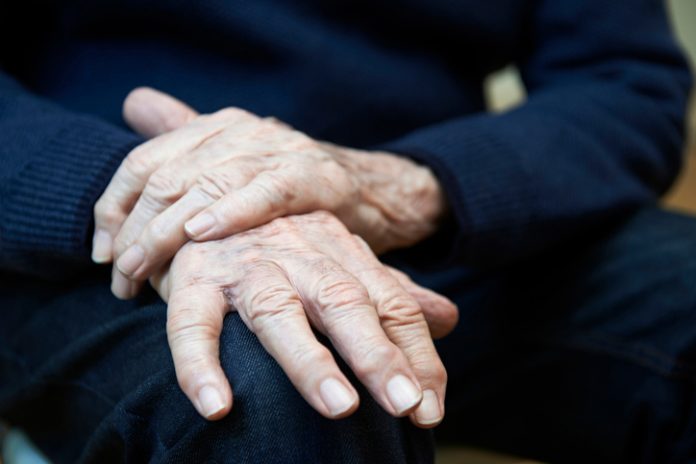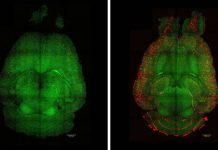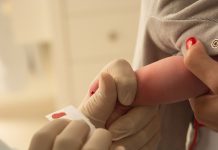We spoke with Parkinson’s UK, an organisation dedicated to funding important research and supporting those affected by Parkinson’s, about the prevalence, impact, and management of the condition
There are currently around 153,000 people in the UK living with Parkinson’s. With population growth and ageing, this is likely to increase to about 172,000 people by 2030. To understand Parkinson’s as a condition, we need to address its causes, its challenges, and the advances being made in research to treat it.
What is Parkinson’s, what are the causes, and how does it present itself?
Parkinson’s is the fastest-growing neurological condition in the world, and currently, there is no cure. As a condition, it is incredibly complex. Given the rate at which the condition develops and the difference in symptoms between individuals, which span over 40 different types, treatments can only assist with managing Parkinson’s symptoms. There are three main sets of treatments for Parkinson’s management: medication, physical activity and therapies, i.e., physiotherapy, speech and language, and occupational. A few of the most common symptoms of the condition are:
- Tremor
- Rigidity (stiffness)
- Slowness of movement
- Mild memory and thinking problems
- Sleeping problems
- Pain
- Mental health problems, including anxiety and depression
It is still unclear exactly what causes someone to go on to develop Parkinson’s, and its pathology is somewhat elusive. One line of thought is that genetic, environmental, and lifestyle changes play a role. This could include things like pollutants, toxins, and diet. However, there is insufficient evidence to say that a single factor directly causes the condition. It is generally recognised that oxidative stress, alterations in proteostasis, mitochondrial dysfunction, and neuroinflammation are key factors in the pathology of Parkinson’s. Research is underway to uncover some of the risk factors for Parkinson’s and understand the root causes of the condition. In the US, for example, the National Institute of Neurological Disorders and Stroke (NINDS) launched the Parkinson’s Disease Biomarkers Program (PDBP) to help identify individuals at risk of developing Parkinson’s and Lewy Body Dementia and to track the progression of these conditions. The program funds research and gathers human biological samples and clinical data to find biomarkers that could indicate the risk of a disease and improve diagnosis, leading to faster development of new treatments. The objectives of PDBP include improving early diagnosis, clinical trials, and treatment of the disease.
At this moment, no definitive medical test exists to diagnose or measure the progression of Parkinson’s. This poses a challenge for health professionals, along with an obstacle to research and the search for better treatments. This also, in part, explains why Parkinson’s is often diagnosed many years after changes have started in the brain, as diagnosis can’t be done via simple tests but relies on a Parkinson’s specialist physically examining the patient, their symptoms, and medical history.
Early signs of Parkinson’s include the loss of sense of smell or handwriting getting smaller. More awareness of the early signs and symptoms might help people go to a healthcare professional sooner and receive a quicker diagnosis. It can also be beneficial for people to keep a record or diary of symptoms and concerns to be brought to their healthcare appointment for wider discussion and analysis.
Parkinson’s management: Treatments available
Some people with Parkinson’s will start taking medication on diagnosis to assist with the loss of dopamine, a chemical messenger made in the brain. Parkinson’s symptoms appear when dopamine levels become too low. To treat this, Parkinson’s specialists prescribe levodopa, a dopamine agonist or an MAO-B inhibitor, to boost these levels. It can take a while to get a person living with Parkinson’s regime right to help them manage their symptoms. Depending on whether they feel they can manage their symptoms at first, others may choose to delay starting treatment.
No current treatment can stop, slow, or reverse Parkinson’s. Yet it is recognised that medication can at least support the masking of symptoms, which can make a big difference in people’s daily lives.
Parkinson’s research has come a long way in the last few decades. By beginning to piece together what is contributing to the causes of Parkinson’s, researchers can advance new trials and treatments that have the potential to slow or stop the condition.
Research and clinical trials for Parkinson’s
There is a substantial unmet need for treatments for the 153,000 people living with Parkinson’s in the UK. This is the driving force behind a wealth of research already trialling potential therapies and treatments to target specific symptoms of the condition or find ways to slow or stop its progression.
Studies suggest that motor and nonmotor symptoms associated with Parkinson’s can be improved through physical activity. Moderate to vigorous levels of at least 150 minutes a week of physical activity can positively affect Parkinson’s management. A common symptom of Parkinson’s is muscle weakness. Strength and balance training can increase muscle mass and bone mineral density and sustain body balance, resulting in a lower fall risk and a longer independent life.
There are several studies already investigating drugs and therapies for Parkinson’s management. Some of these trials have shown noticeable progress over the last few years, which, if they were to be successful, could have the potential to be life-changing for people living with the condition.
Foslevodopa-foscarbidopa (also called Produodopa) is the first drug in years to be approved by the National Institute for Health and Care Excellence (NICE) in England, Northern Ireland, and Wales for people with Parkinson’s who experience movement-related symptoms. Unlike other Parkinson’s medications, it operates via a continuous dose through a fine needle under the skin. It is supported by a small pump to administer the drug over 24 hours a day, something that might be particularly beneficial to those whose current medication no longer controls their symptoms.
Last year at the World Parkinson’s Congress, positive results from a drug called NLX112 (Neurolixis) were shared from a clinical trial for Parkinson’s dyskinesia (involuntary and uncontrollable muscle movement). Although initially trialled for its ability to reduce dyskinesia, the trial found that it also has the potential to help with other motor symptoms of Parkinson’s, such as slowness, stiffness, and tremor. The next stage will be to carry out large-scale clinical studies.
Finally, there has been a growth of research development into medical tests for Parkinson’s – from eye scans to lumbar punctures. It is recognised by the research community and those living with the condition that better medical tests to identify and measure Parkinson’s could radicalise Parkinson’s research. The tests could help diagnose and identify the condition earlier and speed up the search for new treatments.
Global collaborations in the search for better treatments for Parkinson’s are increasing and will have a significant impact on accelerating research. In 2017, Parkinson’s UK founded the Parkinson’s Virtual Biotech, an international programme in partnership with the Parkinson’s Foundation. A global partnership between Parkinson’s UK, the largest charitable funder of Parkinson’s research in Europe, and the Parkinson’s Foundation. Its purpose is to pioneer research and invest in drug discovery and clinical trials to accelerate life-changing new treatments for people with the condition. Driven by the Parkinson’s community, it hopes to deliver life-changing treatment in years, not decades.
To learn more about Parkinson’s and the Parkinson’s Virtual Biotech research programme, please visit: https://www.parkinsons.org.uk/research
Parkinson’s UK
www.parkinsons.org.uk
Twitter
Facebook








